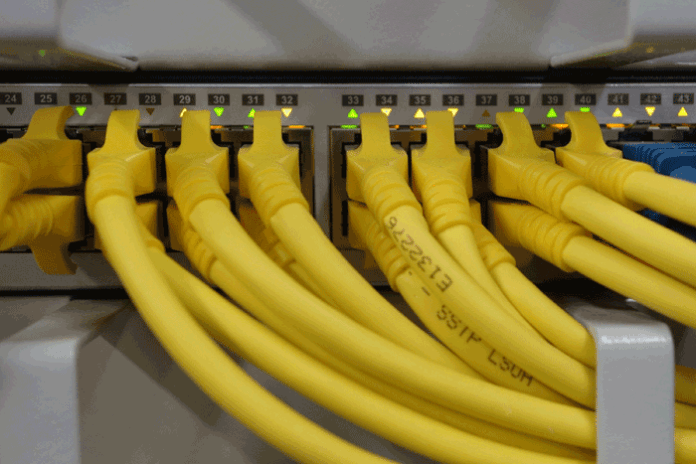Since its founding 13 years ago, the Clark County High Tech Council has successfully lobbied for the tax incentives behind an SEH America expansion, collaborated to bring engineering education to Washington State University Vancouver, and worked with Clark Public Utilities to help local businesses use less energy.
Those successes may be just the beginning for the group, whose nine corporate members employ more than 4,000 people in Southwest Washington.
Already this year, the Clark County High Tech Council has met with Governor Jay Inslee and U.S. Senator Patty Murray, said Rob Bernardi, president and chief operating officer of Kokusai Semiconductor Equipment Corp., and chairman of the council.
According to Bernardi, the council is focused on a number of priorities, which include:
Developing an educated workforce, with a focus on science, technology, engineering and mathematics – or STEM – in local schools;
Improving transportation and infrastructure in the region, which includes support for the Columbia River Crossing;
Boosting the competitiveness of the region, and contributing to economic development.
Many of the council’s most public past successes were the results of lobbying efforts, and members continue to lobby for legislation that they deem critical. However, increasingly the council has also focused on working directly with schools and community members as it strives to strengthen STEM education.
“Education is our number one priority,” said Ben Bagherpour, vice president of operations at SEH America and a member of the council.
“That’s from K-12 through higher ed,” Bagherpour said. “The High Tech Council has specific needs for education from the workforce when we hire. We have a gap in knowledge between what the local industries are looking for and what education systems are teaching. We’ve got to close that gap.”
To make that happen, Clark County High Tech Council members are working directly with local school systems. SEH America has been collaborating with Evergreen Public Schools to encourage college-bound students to study technology and help those who may not be headed to four-year schools learn about manufacturing opportunities. SEH also offers internships to local students. Wafertech has launched a similar collaboration with Camas School District. And nLight CEO Scott Keeney, another tech council member, founded the nConnect program, a nonprofit that mentors students in advanced STEM classes, and connects students to paid internships in high-tech fields.
“Education remains critical – supporting nConnect and other initiatives that link the high-tech community with schools,” Keeney said. “I firmly believe we need to do a lot more to help our schools prepare for a more competitive global economy.”
After education, Bernardi expects the Columbia River Crossing to be a major focus for the council in the months ahead.
High Tech Council members see the CRC as enhancing a critical transportation link between Canada and Oregon, and believe that funding the bridge would send a strong message to their corporate parent companies that this region is business friendly, Bernardi said.
“It’s the best way to keep the state moving forward and at the same time deliver the message that we are open for business,” he added.
Council members discussed the strategy behind funding that project to replace the Interstate 5 Bridge when they met with Gov. Inslee in May.
“We have the impression that we have until about September 30, more or less, to get CRC funding approved,” Bernardi said. “There needs to be some action, or we lose the opportunity to get funds from the federal government.”
Based on the belief that local legislators who oppose the CRC are not likely to be swayed by the high-tech business group, members have reached out to representatives from beyond Southwest Washington in search of support for the project, Bernardi noted.
Clark County High Tech Council members also continue to push for changes to voter-approved Initiative 937, which requires large power utilities to obtain 15 percent of their electricity from non-hydro renewable sources by 2020. As written, the current law could reward utilities for using more electricity as long as the new power use is renewable, and does not give credit to utilities that reduce the amount of power they sell over time. The council said this will likely lead to much higher operating costs, as its members are among the largest power consumers on the Clark Public Utilities system. They would like to change the law to give utilities credit when companies reduce power use by becoming more efficient.
The effort to amend I-937 has taken a temporary back seat while Washington’s Legislature focuses on its budget and on the CRC, Bernardi said, but he expects that the High Tech Council will again put energy into that effort in the future.
Members of the group, meanwhile, remain committed to working together.
“The High Tech Council is a rare example of high tech leaders that come together to support key community initiatives,” Keeney said.
That’s key to the group’s long history of success, Bagherpour believes.
“We’re a small group of high tech manufacturers, but we represent the highest concentration of semiconductor employment in the state,” he said. “We work together closely [and] have a lot of common bonds. We don’t pick a lot of things to work on, but when we do pick things we’ve been very successful. We don’t stop until we accomplish our goals.”
Clark County High Tech Council members:
Kokusai Semiconductor Equipment Corp
Kyocera Industrial Ceramics
Linear Technology
nLight
SEH America
Sharp Laboratories
Sharp Microelectronics of the Americas
Underwriters Labs
WaferTech






